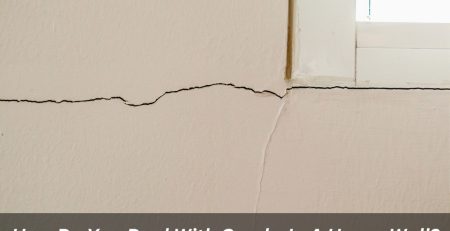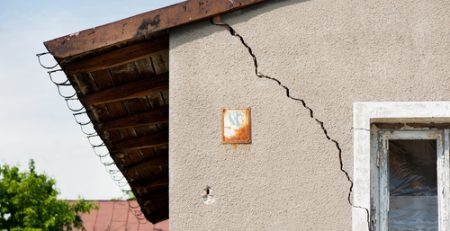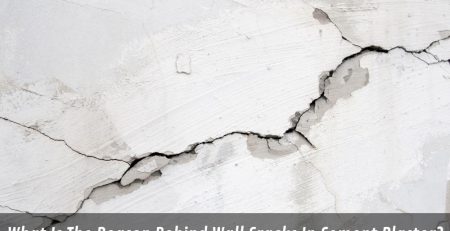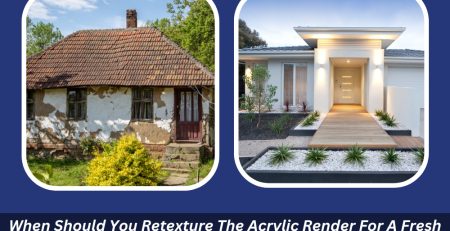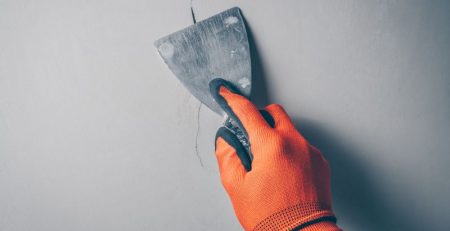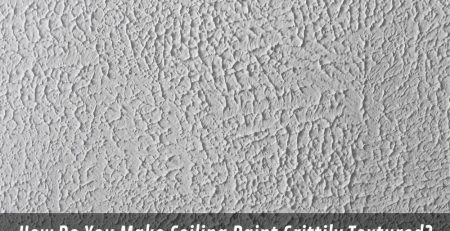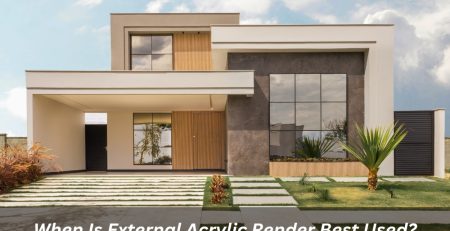What Is The Best Cladding For A House?
Polystyrene Cladding is the exterior material applied to a building or structure. There are several types of cladding materials such as brick, stone, concrete, metal, etc. The type of cladding you choose depends on your budget, style preference, and other considerations.
Cladding is often used to improve the appearance of buildings and structures. For example, brick walls add character to homes and commercial spaces. Metal roofs provide protection from rain and snow. Concrete slabs are durable and cost-effective.
There are various options available for polystyrene cladding. Each has its advantages and disadvantages. In order to make an informed decision about which option will work best for your home or business, it’s important to understand what each type of cladding can do for you.
Types Of Cladding
Brick
Brick is one of the most popular cladding materials in residential construction. The brick is strong, durable, attractive, and easy to maintain. It also provides excellent thermal performance. However, brick requires skilled labour and specialized equipment to lay properly.
Stone
Stone is another popular choice for cladding. It adds beauty and value to any property. A stone comes in many different colours, shapes, sizes, textures, and patterns.
It is also very durable and long-lasting. However, the stone is heavy and expensive.
Concrete
Concrete is a versatile and inexpensive cladding material that is widely used in both residential and commercial properties. It is lightweight, easy to apply, and relatively easy to repair. It is also fire-resistant. However, concrete does not have much aesthetic appeal.
Metal
Metal is a great alternative to traditional wood siding. This metal roofing is more affordable than timber and is easier to install. It is also fireproof.
However, metal is heavier than wood and vinyl. This makes it difficult to install over existing structures.
Vinyl
Vinyl is a lightweight, low-maintenance, and affordable cladding option. It is suitable for use in all kinds of weather conditions. It is also flexible and easy to cut. This is commonly used for external applications like fences, shutters, and pergolas.
Timber
Timber is a natural product that is used to build houses and other structures. It is strong, durable, and long-lasting. It is also environmentally friendly. However, timber requires extensive preparation before installation.
Fibre Cement
Fibre cement is a composite material made up of cement, sand, water, and fibreglass. And fibre cement is a good alternative to brick and stone because it is cheaper than these materials. It is also lighter than brick and stone.
Aluminium
Aluminium is a lightweight, durable, and affordable cladding solution. Also, aluminium panels come in a variety of designs and styles. They are easy to install and require minimal maintenance.
Building Products
Building products include everything that goes into constructing a building. These items include bricks, mortar, nails, screws, lumber, windows, doors, and so forth.
Home Exteriors
Home exteriors include anything outside of the building itself. Examples include decks, patios, porches, gardens, fencing, and so on.
Sound Insulation
Sound insulation is a way to reduce noise inside a room. It works by reducing sound waves through the air.
Cost Effective
Cost-effective means that the product is less expensive than other alternatives.
Feature Walls
A feature wall is a wall with a specific purpose. For example, a feature wall could be used as a dividing wall between two rooms, or it could be used to separate a kitchen from a dining area.
Cladding Systems
Cladding systems are a combination of several types of cladding. For instance, a cladding system might include brick veneer, aluminium, and timber.
How do I decide what type of cladding to use for a new house?
There are some things you need to consider when deciding whether to use a particular type of cladding. These factors will help you determine which type of cladding would work best for your home.
Size
The first factor you should consider is size. You must make sure that the polystyrene cladding material can cover an entire wall, ceiling, or floor. If the polystyrene cladding isn’t big enough, then there won’t be enough space for a complete coat of paint later.
Style
This is probably the second most important factor. You want to choose a style that matches the overall look of your house. If you don’t match the style, then the cladding may end up looking out of place.
Weather Conditions
You should also think about the weather conditions where your house will be located. Will it be exposed to extreme heat or cold? Do you expect snow to fall regularly?
Will rain cause damage to your property? All of this information will help you decide what kind of cladding would be best for your house.
Fire Resistance
Another thing to keep in mind is fire resistance. Certain materials are better at resisting flames than others. Be aware if your house has any flammable objects nearby. Fire-resistant cladding includes PVC, polyethylene terephthalate (PET), aluminium, steel, concrete block, and cinder blocks.
Roof Pitch
Finally, you must consider how steeply the roof slopes. Roof pitch refers to the angle at which the roof slopes away from the ground. This can be calculated using a formula called the “slope ratio.” Usually, roofs have a range of pitches, but the more vertical they become, the steeper the roof becomes.
If your house has a pitched roof, then you can use different types of cladding for different parts of the roof. For example, you could use metal sheets on the top of the roof, followed by brick veneer, and then finally tile.
When choosing a cladding option, you should take all of these factors into consideration. By doing so, you’ll ensure that you get the right cladding for your house.
Which style of roof would be most expensive to maintain?
Most people think that asphalt shingle roofs cost the least to repair and maintain. In fact, however, slate roofs actually cost more to replace over time. Slate roofs require regular maintenance because they have many small tiles that can break off easily. Asphalt shingles, on the other hand, only require simple cleaning and sealing every few years.
PVC versus Aluminium
This is another popular choice among homeowners who like their homes to blend seamlessly with nature. this is available in both single- and double-hung styles, and it is easy to install. It is also very durable because it doesn’t rust easily. However, aluminium can be difficult to clean because it attracts dirt.
On the flip side, PVC siding comes in various colours and designs. It is relatively inexpensive to purchase and install. Unfortunately, PVC does not last as long as aluminium.
Costs Versus Value
One final point to remember when selecting a cladding material is its price. While most options will come with a one-time installation fee, some may charge monthly fees. Also, some companies will offer discounts to homeowners who pay upfront rather than having to finance the project.
In general, though, the higher the quality of the product, the lower the price tag. When comparing prices between two similar products, always focus on the difference in material costs.
What are the benefits of cladding?
Cladding helps protect houses against the elements. If you live somewhere with harsh winters, you might want to invest in a thicker polystyrene cladding solution. Likewise, if you live in an area with high humidity levels, you might need extra protection from storms and heavy rainfall.
There are several ways to apply to clad. Some homeowners choose to lay down panels directly onto the roof of their houses. Others prefer to use vinyl siding instead. Both methods work well, although each has its own pros and cons.
Vinyl Siding
Satisfying homeowners who prefer to stay close to the natural environment, vinyl cladding offers superior durability and flexibility. Vinyl siding is made up of thin layers of plastic laminated together via a process known as thermoforming. It can be installed quickly and cheaply, and it won’t rot or peel like wood. This makes it ideal for applications where there’s no access to the roof.
Wood
If you don’t mind spending a bit more money, building a wooden deck is a great way to add value to your home while providing additional outdoor living space. Wood decks are typically made out of pressure-treated lumber, which means they’re resistant to decay and insects. They are also extremely sturdy, making them perfect for outdoor furniture.
Metal Roofing
Metal cladding is often used as a secondary layer of protection over an existing roof. Also, metal roofs are usually made up of galvanized steel, zinc, copper, or aluminium, and they come in various shapes and sizes. They also come in different colours, so homeowners can personalize their homes by choosing the right shade.
Polystyrene Board
Some homeowners opt for polystyrene board (PSB) as their exterior cladding option. PSB boards are manufactured using recycled materials and are designed to withstand extreme weather conditions such as rain, snow, hail, wind, and even fire. They are especially good at protecting homes from strong winds because they resist tearing and snapping.
Stone & Brick
If you’ve got the budget, consider upgrading your home with stone or brick cladding. These types of materials are beautiful additions that make a home look much more expensive than it actually is. They also provide excellent thermal mass, meaning they keep your home cooler during the day and warmer at night.
Timber
The beauty of timber is that it looks great! Wood typically ages gracefully, becoming darker over time. This makes it perfect for areas where exposure to sunlight is limited, such as a basement or garage.
Timber adds character to your home. With proper care, it can last for decades. On the downside, installing timber is a complicated job, which means that it will set you back more money than other types of exterior cladding.


